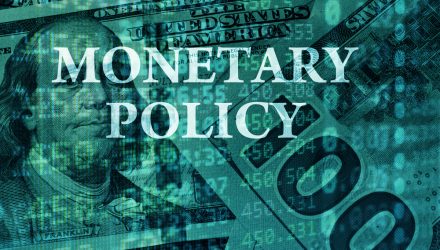If we use history as our guide, we should expect interest rates to rise ahead of a Fed tightening cycle. The yield curve would begin to flatten as the cooling effects of higher rates should be felt throughout the economy. The issue with relying on history is that we have little context upon which to depend.
Specifically, the Fed is embarking on a tightening cycle (first by tapering, then by raising rates) and it is widely speculated that they will also allow the balance sheet to run off – which effectively further tightens monetary conditions. Complicating the environment are the oft-lamented government and corporate debt levels. We have addressed this in our newsletters ad nauseum for many years, but it remains relevant. While headline unemployment metrics are historically low, they do not reflect the low participation rate, which has improved somewhat from pandemic lows but remains depressed. Participation has been steadily declining since 2000. Finally, the U.S. consumer, having driven much of the economic growth in the US, will now face reduced governmental assistance in the form of cash payments and protections such as rent subsidies and tax credits. A significant portion of the U.S. population has been on the dole if you will, artificially propped up by bailouts from each successive bubble from which we have only partially recovered. There has been no chance or opportunity for any of the excesses to be cleared out of the economy. The Fed has not heretofore been successful in permanently or meaningfully rolling back this massive accommodation.
The Fed has effectively painted themselves into a very tight corner. This is a tough game – tantamount to trying to slowly let air out of a balloon without popping it. Chair Powell has been clear in his assertion that despite the Fed’s financial innovation in the form of ever new monetary tools, the Fed can only impact demand but not supply. Yet imbalances in the supply chains for goods and labor are the very cause of the shortages plaguing this recovery, not demand.
We remain adamant in our assertion that elevated valuations are solely dependent upon both low inflation and low rates. The Fed taking its foot off the accelerator will ameliorate upward pressure on inflation and rates. But, with so many countervailing influences and 12 years of capital allocation distortion, we find it difficult to see the economy getting back to the Fed’s “normal” in an orderly or direct manner, particularly since so much of our macroeconomic environment depends on low rates. The idea that corporate earnings growth can offset the impact of higher rates and support never before witnessed valuations is likely a miscalculation.
Cyclical asset class leaders often lead to the downside. We are keenly focused on anticipating any major shifts in leadership as these changes often persist for entire cycles. There are many positive and negative consumer cross currents. Consumers have cash and savings but have been burning through them at a blistering pace. The benefit of a generous employment market may quickly fizzle if participants in those typically semi-permanent job categories are forced back to work by dwindling benefits and unforeseen tax implications of credits pulled forward. In addition to this are potentially increased taxes on investment portfolios and on ordinary income among the highest tax brackets. We make our portfolio positioning decisions based on the weight of the evidence. For now, that evidence is mixed, and we remain steadfast, vigilant, and protective.
GLOBALT’s Key Points:
- COVID infection rate is stunning
- GDP growth is dependent upon productivity gains and population growth.
- The Fed is committed to “moving from highly accommodative to less accommodative.”
- Valuations are dependent upon low rates and the path of inflation.
- Rates remain range bound and may be structurally contained.
- Signs of inflation have emerged and may be more persistent than we originally believed.
- Employment has rebounded, but structural full employment remains elusive, and job growth has been weak.
- Fundamentally, risks are skewed to the downside, but unprecedented liquidity is supporting markets.
- This is an environment well suited to active management.
Fourth Quarter 2021 Review
The United States equity market, broadly measured by the Russell 3000 Index, returned 9.3% in the fourth quarter and 25.7% for the year. Notable strong performance came from the real estate sector, which, as measured by the S&P Select Services Index family, returned +17.54% and +46.19%, for the fourth quarter and calendar year period. Rising rents and warehouse and distribution centers, benefiting from increased online sales, drove the sector performance, while other real estate subsectors such as health care, office, and retail continued to see negative impacts from COVID. The energy sector continued to be strong in the fourth quarter and finished off the year up a stunning +53.43%. The only notable negative for the quarter was the communication services sector (-2.87%). Small cap growth and value as measured by the Russell 2000 Growth and Value indexes were +0.01% and 4.4% in the quarter. That said, small cap value was one of the top performing U.S. equity asset classes for the year, up 28.27%, following closely behind the Russell Mid Cap Value, which was up 28.34% over the year. International markets were relatively weak all year with the MSCI All Country World Index ex USA +1.82% and +7.82% for the fourth quarter and calendar year.
The fourth quarter earnings growth rate for the S&P 500 is estimated to be +21.7%. If this is the actual growth rate, it would mark the fourth straight quarter of earnings growth above 20%. However, companies may be warning of business impact from the Omicron virus as 56 of the 93 companies that have reported, issued negative guidance. This is the highest number since Q1 2020, the start of the pandemic. We look to company commentary for insight into the impact of ongoing fundamental concerns.


